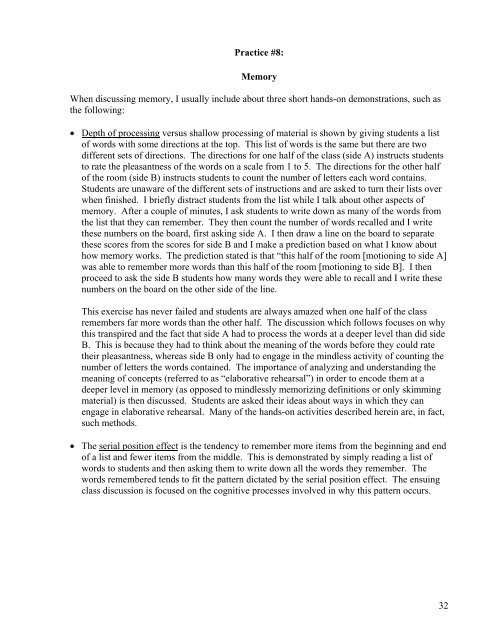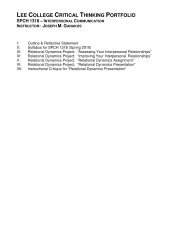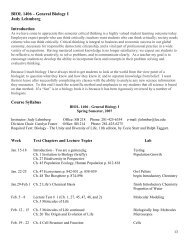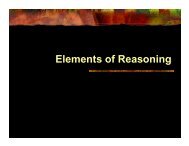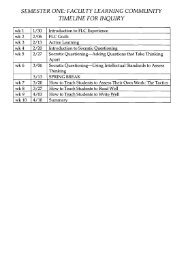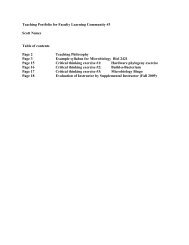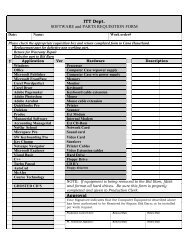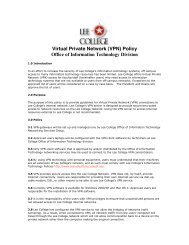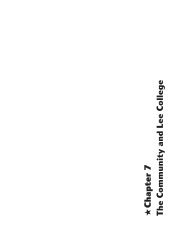Cheryl Willard - Lee College
Cheryl Willard - Lee College
Cheryl Willard - Lee College
Create successful ePaper yourself
Turn your PDF publications into a flip-book with our unique Google optimized e-Paper software.
Practice #8:<br />
Memory<br />
When discussing memory, I usually include about three short hands-on demonstrations, such as<br />
the following:<br />
• Depth of processing versus shallow processing of material is shown by giving students a list<br />
of words with some directions at the top. This list of words is the same but there are two<br />
different sets of directions. The directions for one half of the class (side A) instructs students<br />
to rate the pleasantness of the words on a scale from 1 to 5. The directions for the other half<br />
of the room (side B) instructs students to count the number of letters each word contains.<br />
Students are unaware of the different sets of instructions and are asked to turn their lists over<br />
when finished. I briefly distract students from the list while I talk about other aspects of<br />
memory. After a couple of minutes, I ask students to write down as many of the words from<br />
the list that they can remember. They then count the number of words recalled and I write<br />
these numbers on the board, first asking side A. I then draw a line on the board to separate<br />
these scores from the scores for side B and I make a prediction based on what I know about<br />
how memory works. The prediction stated is that “this half of the room [motioning to side A]<br />
was able to remember more words than this half of the room [motioning to side B]. I then<br />
proceed to ask the side B students how many words they were able to recall and I write these<br />
numbers on the board on the other side of the line.<br />
This exercise has never failed and students are always amazed when one half of the class<br />
remembers far more words than the other half. The discussion which follows focuses on why<br />
this transpired and the fact that side A had to process the words at a deeper level than did side<br />
B. This is because they had to think about the meaning of the words before they could rate<br />
their pleasantness, whereas side B only had to engage in the mindless activity of counting the<br />
number of letters the words contained. The importance of analyzing and understanding the<br />
meaning of concepts (referred to as “elaborative rehearsal”) in order to encode them at a<br />
deeper level in memory (as opposed to mindlessly memorizing definitions or only skimming<br />
material) is then discussed. Students are asked their ideas about ways in which they can<br />
engage in elaborative rehearsal. Many of the hands-on activities described herein are, in fact,<br />
such methods.<br />
• The serial position effect is the tendency to remember more items from the beginning and end<br />
of a list and fewer items from the middle. This is demonstrated by simply reading a list of<br />
words to students and then asking them to write down all the words they remember. The<br />
words remembered tends to fit the pattern dictated by the serial position effect. The ensuing<br />
class discussion is focused on the cognitive processes involved in why this pattern occurs.<br />
32


